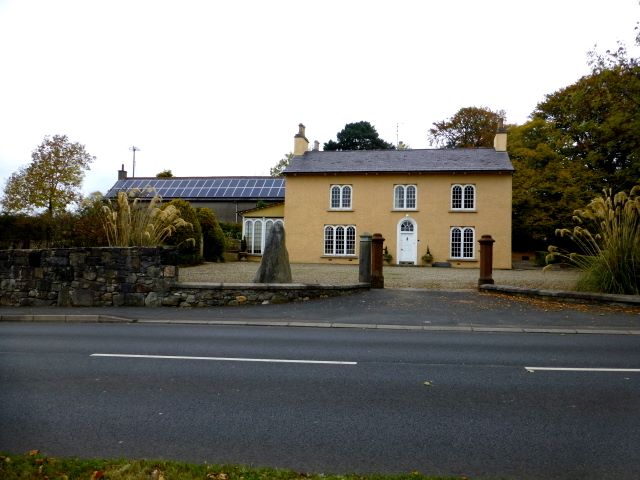One of the oldest plantation-era manors in Omagh, Mullaghmore House holds a deep and layered history tied to church, politics, and the military.
Located along the Old Mountfield Road, Mullaghmore House is now a stylish bed and breakfast. The building dates back to the 1750s and was meticulously restored over 20 years ago to preserve its authentic Georgian character.
Originally the ambitious project of the Stack family – who later built Knock-na-Moe Castle – the house first appears on record in the 1833 Ordnance Survey map.
At that time, it was valued at £17 (around £1,233 today), rising later to £28 (£2,771 today).
The two-storey building features an extended ground floor and a late Georgian front pile, added in the early 1800s.
The Stack family, prominent figures in Tyrone’s 19th-century church, military, and legal life, were long associated with the property.
Rev Richard Stack became rector of Drumragh Parish in 1791 and later transferred to Cappagh in 1807, marking the beginning of the family’s lasting ties with the area.
Soon after, they acquired Mullaghmore House and the surrounding townland. At the time, the rector of Cappagh Parish received substantial income from church-owned lands.
When the Mountjoy Estate – some 30,000 acres once owned by the Gardiner family – was sold off following bankruptcy, the Stacks seized the chance to increase their holdings.
By 1876, a land survey showed George Hall Stack of Mullaghmore owning 3,134 acres, while Richard Stack of Omagh held another 437. Various branches of the family also owned property in Omagh, including all of Brook Street.
In the early 1900s, the house passed to the Scott family, who had extensive military connections.
It was frequently rented out, and in 1922, Major General Patrick Scott – who had served in Egypt, India, and Sudan – rented the house to the Gorman family.
It was here that Sir John Gorman, a future key figure in the Northern Ireland peace process during the 1990s, was born in February 1923.
His father, a former RIC district inspector, helped form the Royal Ulster Constabulary in Mullaghmore House following partition. The house even served briefly as RUC headquarters before operations moved to the more secure Seskinore House, which had boundary walls and a walled garden.
Despite extensive renovations between 1950 and the early 2000s, Mullaghmore House still closely resembles its original form.
Renovation work in 2002 uncovered several historical features, including a front pile built from large quoins – believed to have come from a medieval structure.
Low doors, slit windows, and two brick tunnels from the kitchen (one leading outside, the other under the boiler room) suggest even deeper historical roots.
Additionally, two low brick tunnels originating from the kitchen were discovered… one leading outside to east of the kitchen and the other running under the boiler room.
Today, tourists and holiday-goers are still drawn to a beautifully preserved home rich in centuries of history.







